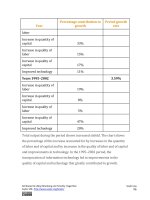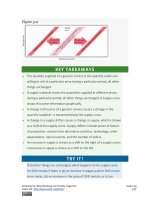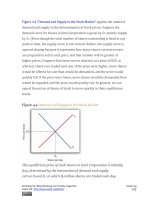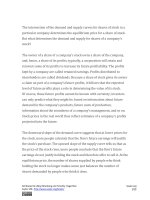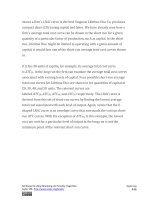Authors libby rittenberg 484
Bạn đang xem bản rút gọn của tài liệu. Xem và tải ngay bản đầy đủ của tài liệu tại đây (418.26 KB, 1 trang )
Figure 9.7 Applying the Marginal Decision Rule
The market price is determined by the intersection of demand and
supply. As always, the firm maximizes profit by applying the marginal
decision rule. It takes the market price, $0.40 per pound, as given and
selects an output at which MR equals MC. Economic profit per unit is
the difference between ATC and price (here, $0.14 per pound);
economic profit is profit per unit times the quantity produced ($0.14 ×
6,700 = $938).
We can use the graph in Figure 9.7 "Applying the Marginal Decision
Rule" to compute Mr. Gortari’s economic
profit. Economic profit per unit is the difference between price and
average total cost. At the profit-maximizing output of 6,700 pounds of
radishes per month, average total cost (ATC) is $0.26 per pound, as
shown in Panel (b). Price is $0.40 per pound, so economic profit per
unit is $0.14. Economic profit is found by multiplying economic profit
per unit by the number of units produced; the firm’s economic profit is
thus $938 ($0.14 × 6,700). It is shown graphically by the area of the
shaded rectangle in Panel (b); this area equals the vertical distance
Attributed to Libby Rittenberg and Timothy Tregarthen
Saylor URL: />
Saylor.org
484
